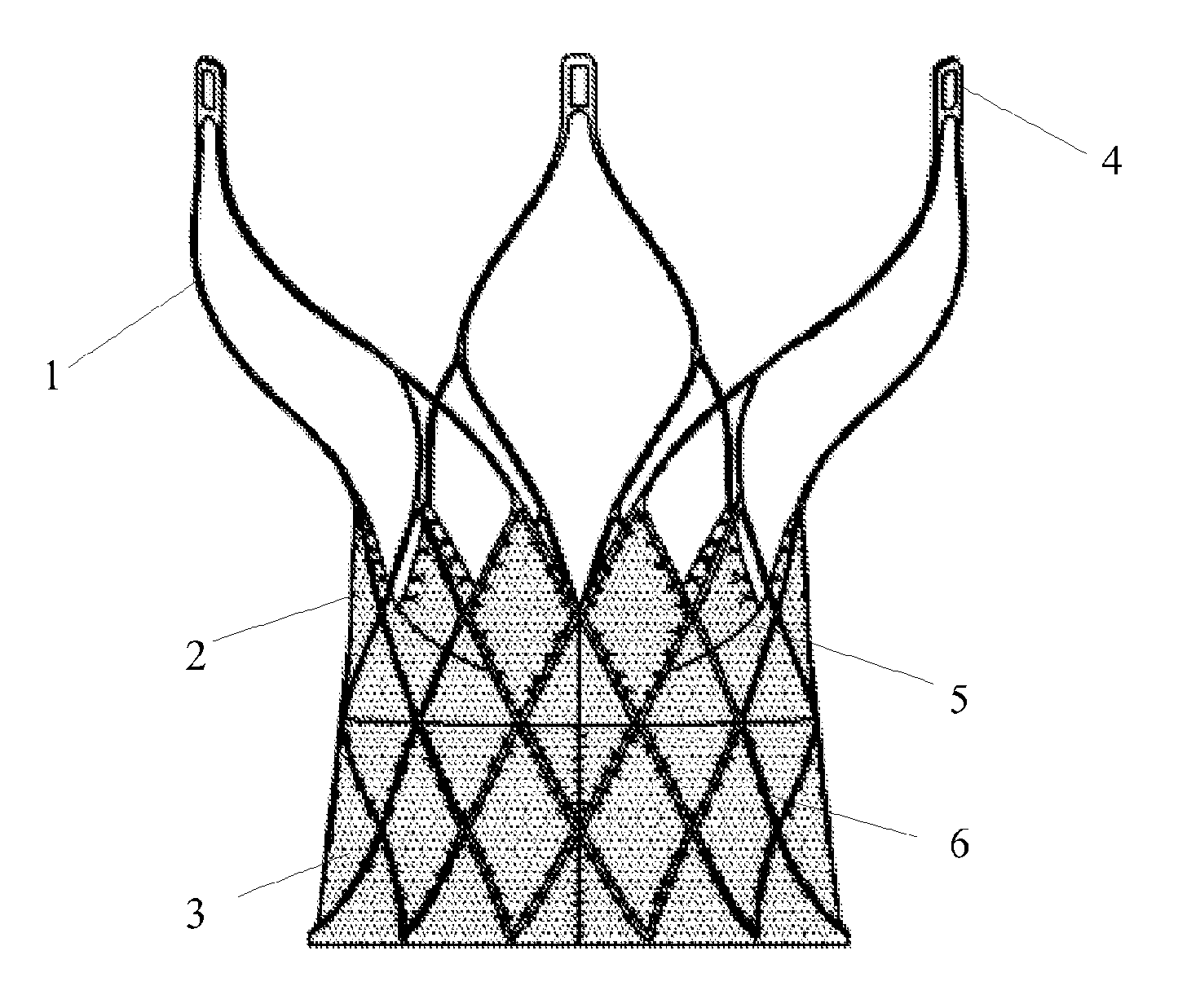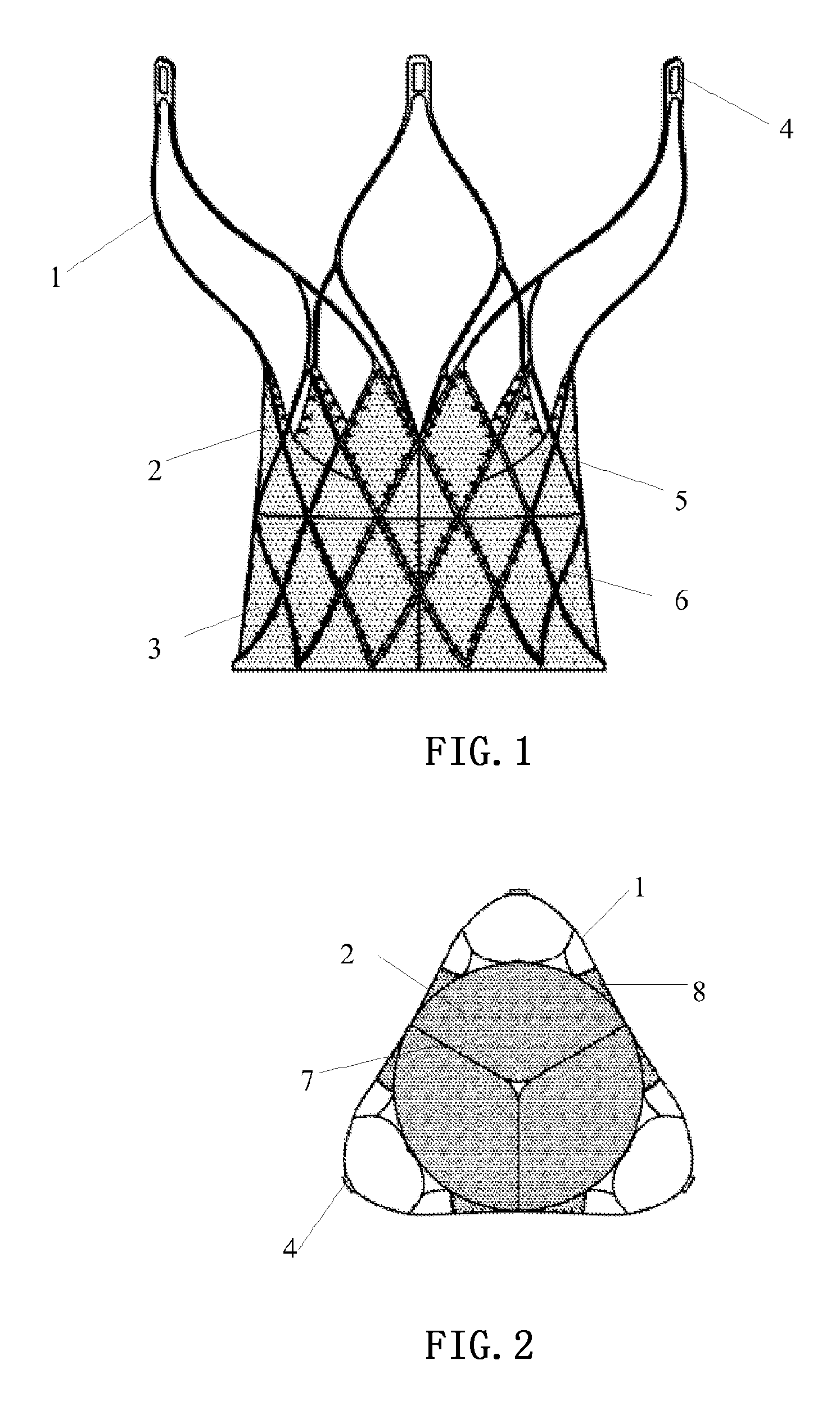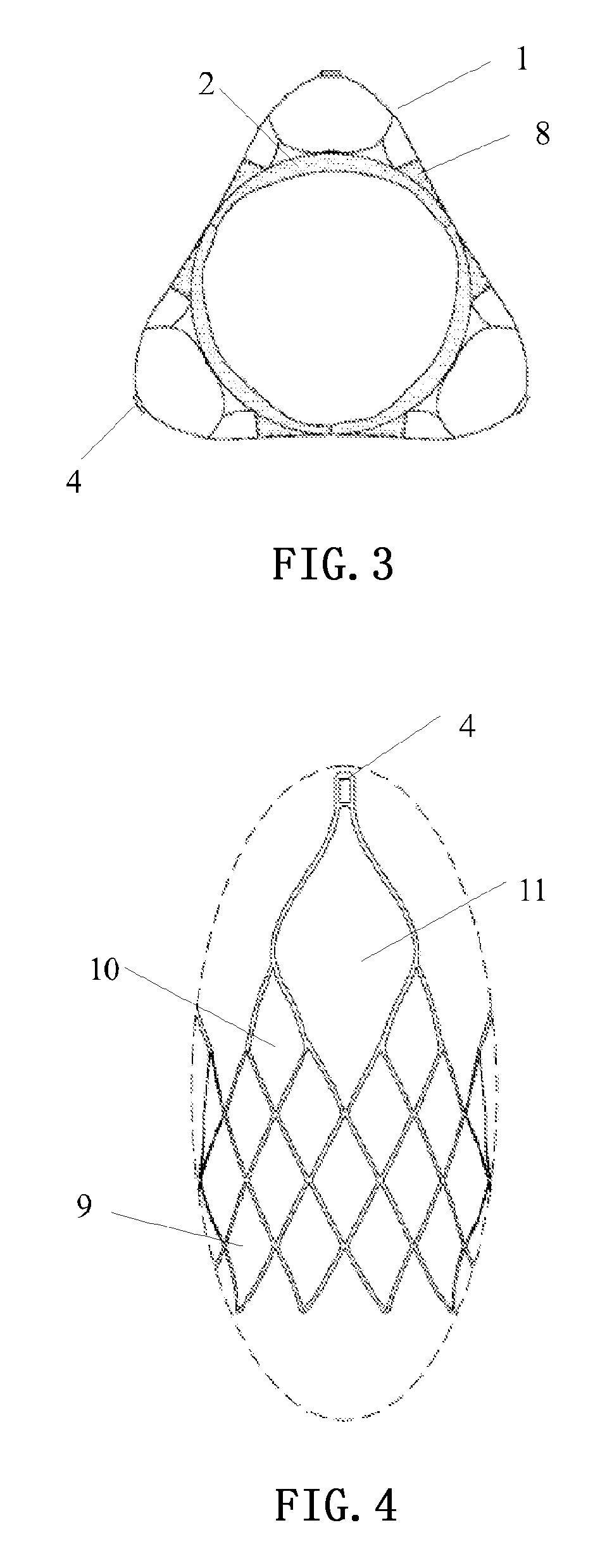Invasive cardiac valve
a cardiac valve and stent technology, applied in the field of invasive cardiac valves, can solve the problems of valve stenosis or regurgitation, endanger patient's life, bleeding or thromboembolism, etc., and achieve the effect of reducing the force effect, preventing the displacement of cardiac valves, and effectively preventing the risk of surrounding leakag
- Summary
- Abstract
- Description
- Claims
- Application Information
AI Technical Summary
Benefits of technology
Problems solved by technology
Method used
Image
Examples
embodiment 1
[0065]Please refer to FIGS. 1-5. FIG. 1 is a front view of the cardiac valve provided by the Embodiment 1 of the present invention, FIG. 2 is a top view of the cardiac valve provided by the Embodiment 1 of the present invention when the valve is in the closed state, FIG. 3 is a top view of the cardiac valve provided by the Embodiment 1 of the present invention when the valve is in the open state, FIG. 4 is a partially enlarged view of the stent provided by the Embodiment 1 of the present invention, and FIG. 5 is a schematic diagram of the compressed state of the cardiac valve provided by the Embodiment 1 of the present invention.
[0066]In these figures, 1 is the tubular stent, 2 is the leaflet, 3 is the skirt, 4 is the delivery and retrieval hole of the cardiac valve, 5 is the shape of the leaflet edge, 6 is the suture track of the skirt and the stent, 7 is the leaflet shut line, 8 is the suture of the leaflet and the stent, 9 is the first stent unit, 10 is the second stent unit, and...
embodiment 2
[0087]Please refer to FIGS. 13-20. FIG. 13 is a front view of the cardiac valve provided by the Embodiment 2 of the present invention, FIG. 14 is a schematic diagram of the compressed state of the cardiac valve provided by the Embodiment 2 of the present invention, FIG. 15 is a schematic diagram of the design structure of the valve provided by the Embodiment 2 of the present invention, FIG. 16 is a folded view of the valve provided by the Embodiment 2 of the present invention, FIG. 17 is an unfolded view of the suture of the valve provided by the Embodiment 2 of the present invention, FIG. 18 is a perspective view of the suture of the valve provided by the Embodiment 2 of the present invention, FIG. 19 is a schematic view of the suture track of the valve and the stent provided by the Embodiment 2 of the present invention, and FIG. 20 is a schematic view of the positional relationship between the cardiac valve provided by the Embodiment 2 of the present invention and the coronary ost...
PUM
 Login to View More
Login to View More Abstract
Description
Claims
Application Information
 Login to View More
Login to View More - R&D
- Intellectual Property
- Life Sciences
- Materials
- Tech Scout
- Unparalleled Data Quality
- Higher Quality Content
- 60% Fewer Hallucinations
Browse by: Latest US Patents, China's latest patents, Technical Efficacy Thesaurus, Application Domain, Technology Topic, Popular Technical Reports.
© 2025 PatSnap. All rights reserved.Legal|Privacy policy|Modern Slavery Act Transparency Statement|Sitemap|About US| Contact US: help@patsnap.com



